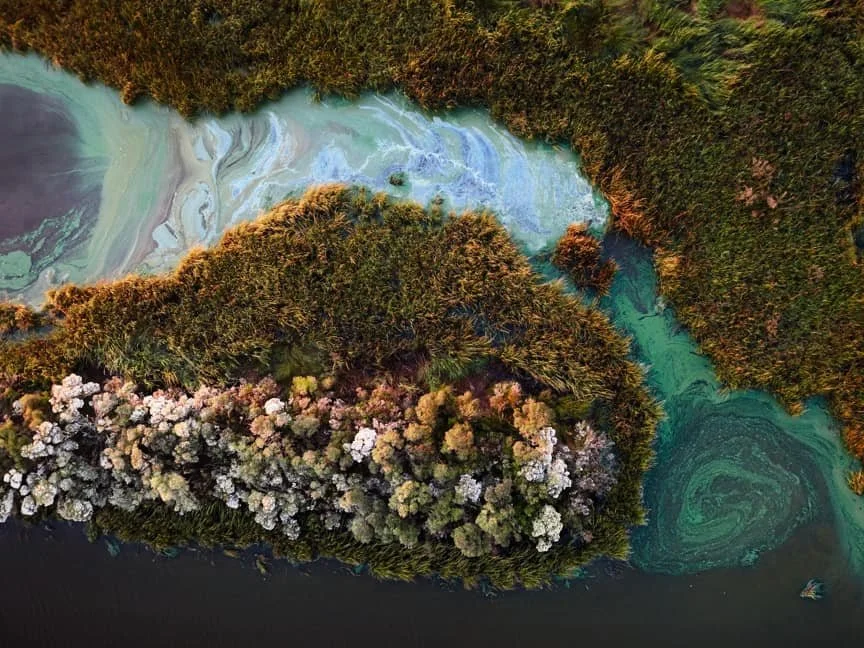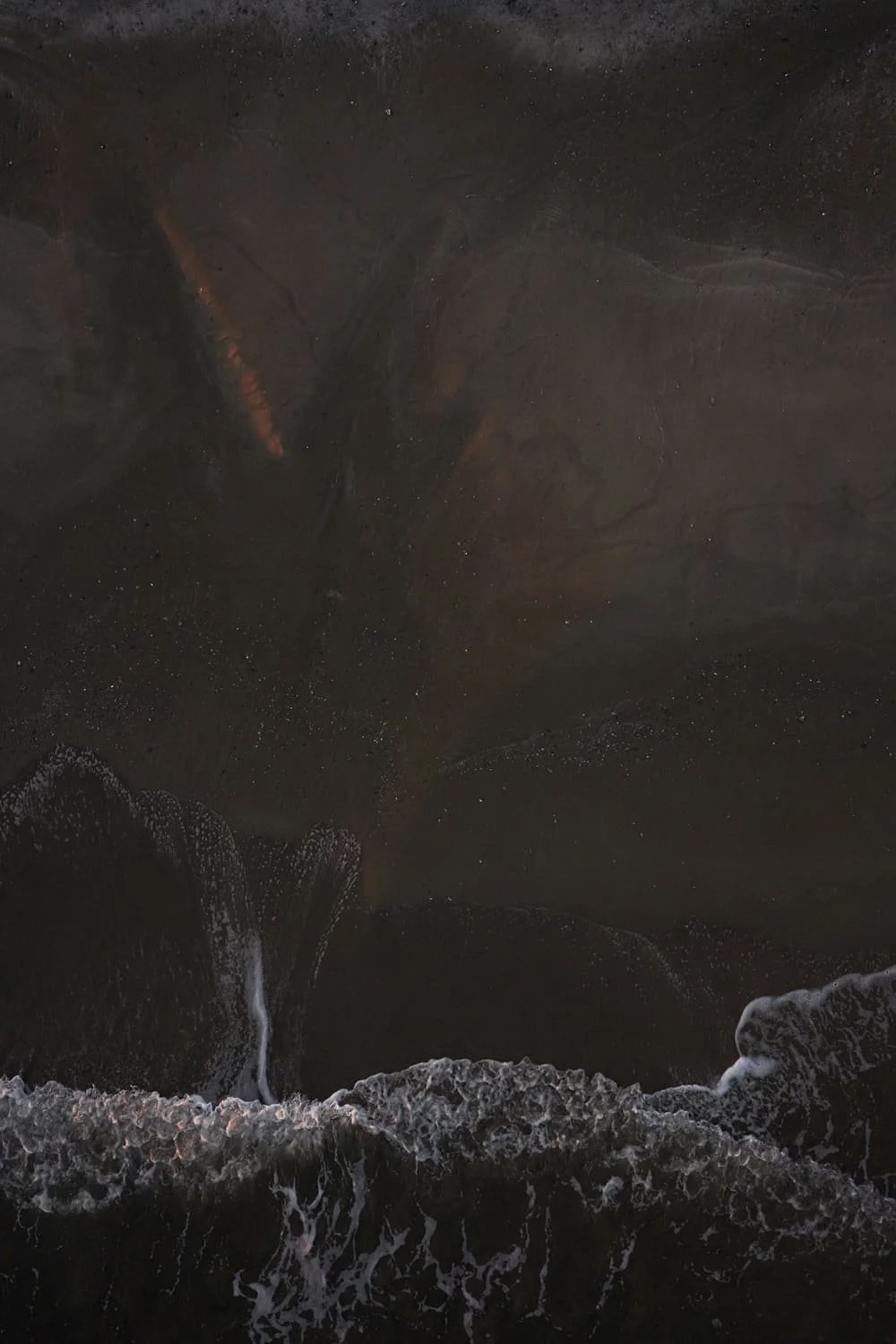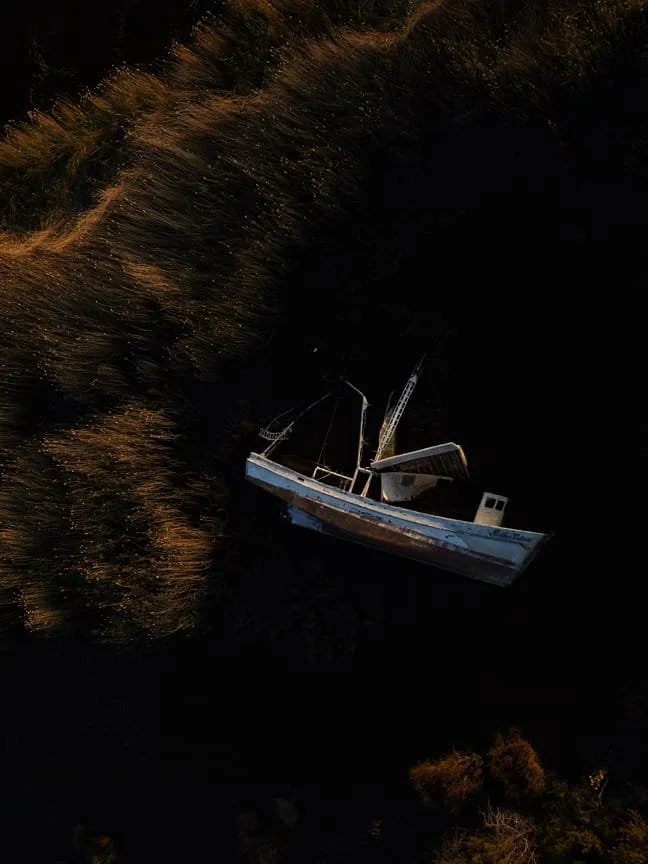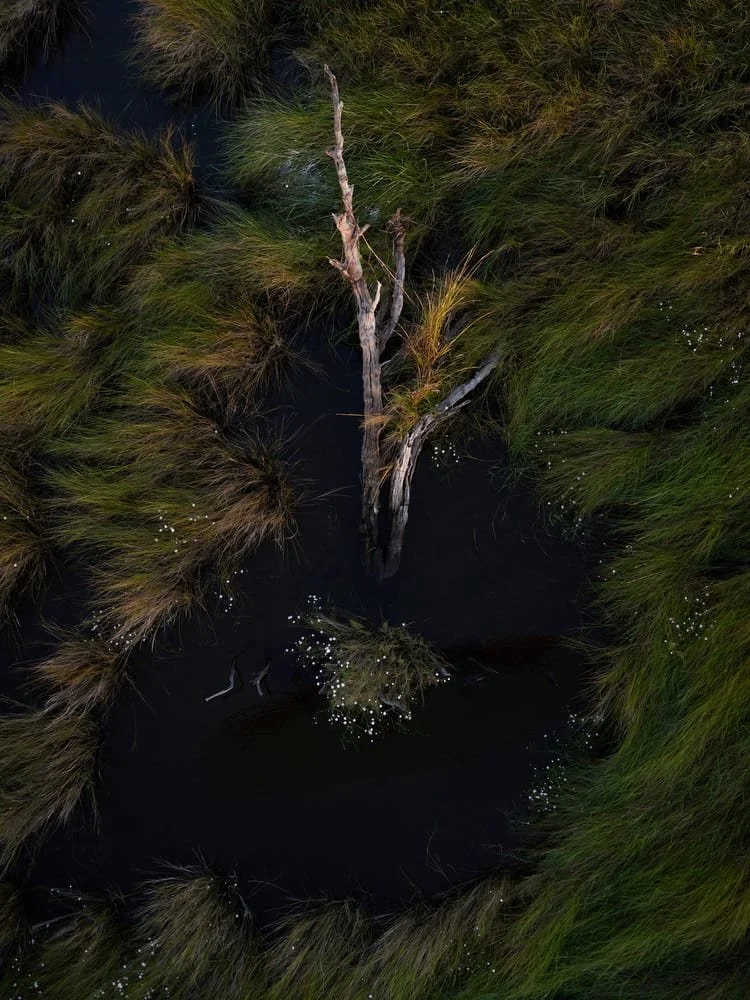Tide Lines, Ben Depp
4/1 - 5/28/ 22, Opening Reception 4/1 6-8PM
© Ben Depp
Tide Lines, Artist Statement:
Southern Louisiana, once formed by sediment deposited by the Mississippi River, is now rapidly eroding. Over the past eighty years, Louisiana has lost 2,000 square miles of wetlands, accounting for ninety percent of the coastal marsh loss in the US.
Louisiana's eroding wetlands provide a natural barrier from hurricanes and storm surges that protects seventy percent of the state's population. They also support the largest commercial fishing grounds in the lower 48 US states, and provide crucial habitat for many endangered and threatened species of birds and animals.
This work is part of my ongoing project documenting the rapidly shifting landscape of southern Louisiana. I have been flying above the bayous and wetlands of southern Louisiana in a powered paraglider for six years, photographing visual clues that tell the story of this place and its destruction.
With a powered paraglider, I can fly between ten and five thousand feet above the ground. I spend hours in the air, camera in hand, waiting for the brief moments when the first rays of sunlight mix with cool predawn light and illuminate forms in the grass, or when evening light sculpts fragments of marsh and the geometric patterns of human enterprise - canals, oil platforms, pipelines and roads.
In my photographs, one can make out varieties of plants, see the weather and seasonal changes - from the shifting high-water line, color temperature and softness of light, to what is in bloom, distinguish living cypress trees from those that have been killed by saltwater intrusion, or see the patterns made by wave energy on barrier island beaches.
This intimate view of Louisiana from a birds-eye perspective prompts me – and I hope, others – to see and understand its landscape in new ways and to reexamine my relationship to the environment that surrounds me.
Reviews of this work:
“Ben Depp’s images show the fragile beauty of an ecosystem under duress. From the aerial vantage point, climate change stops being a sterile political concept or an assignation of blame and becomes instead a comment on what we will have left to protect.” —Kate Bubacz, senior photo editor, BuzzFeed News
“While the wetlands erosion has been well documented, no photographer has done it quite like Depp: He gets his shots while flying in a powered paraglider. The resulting images are precise and intimate, capturing both the narrative arc and the formal beauty of one of North America’s most endangered environmental treasures.” —Jonathan Hahn, Sierra Club
"These dreamy, surreal perspectives of a slowly submerging world are scenes of conflict. They exert a fascination from which we turn away, until we become personally engulfed in that reality. Most of us live on safe ground. But we live with the knowledge of an encroaching tide." —Thomas Beller, Smithsonian Magazine
Ben Depp is an artist and National Geographic Explorer based in New Orleans, Louisiana. Much of Ben’s work has centered around environmental issues and his environmental photography has been funded by the Pulitzer Center for Crisis Reporting, the Midwest Center for Investigative Reporting, the Ford Foundation, and the National Geographic Society.
In 2014, Depp began making aerial images by powered paraglider, which allows for hours of exploration, a low flight path and the time-intensive search for surprising compositions. He learned to pilot a powered paraglider for his ongoing work documenting wetland loss and coastal erosion in Louisiana and the Gulf Coast. This work has been shown at A Gallery for Fine Photography, the Louisiana State Museum, and the Ogden Museum of Southern Art. The project was a 2017 Communication Arts Annual winner, and has been published by Smithsonian Magazine, National Geographic, Audubon, Scientific American, Photography Forum and more.
Depp recently finished an artist-in-residence at Court 13 Arts, where he built a wood sailboat to replace the worn antique wood boat he used to access remote parts of South Louisiana which are too remote to fly to.
For more of Ben’s work please visit his website.






